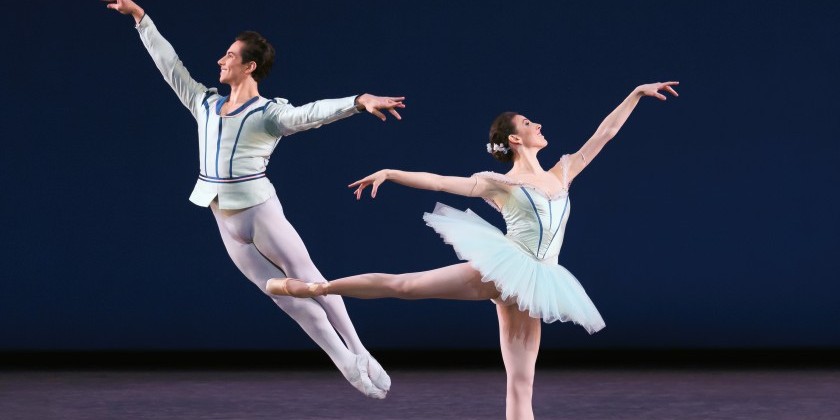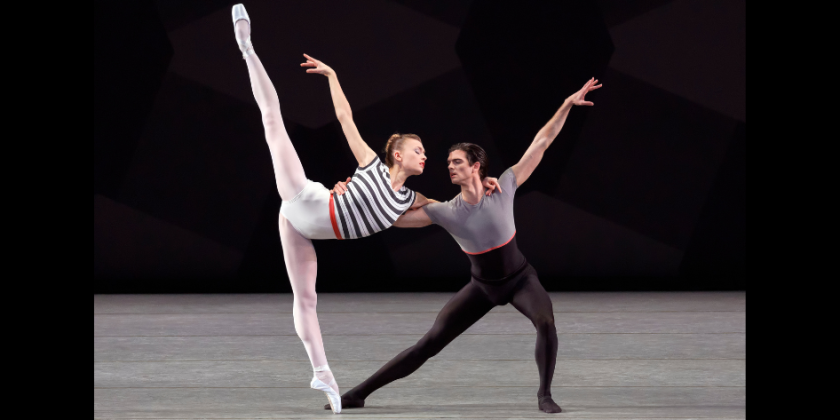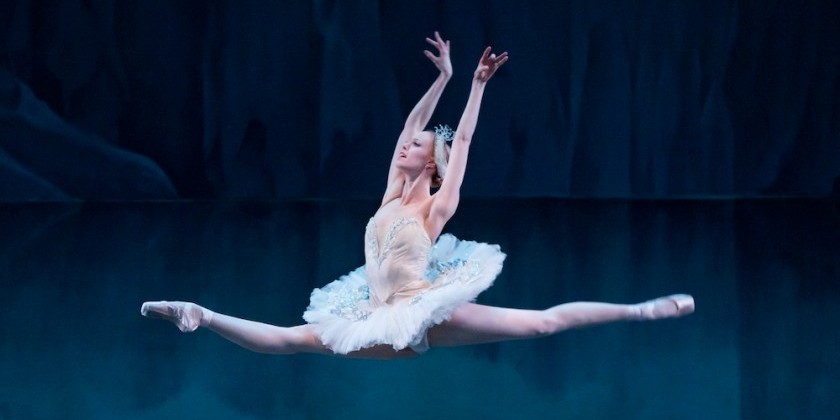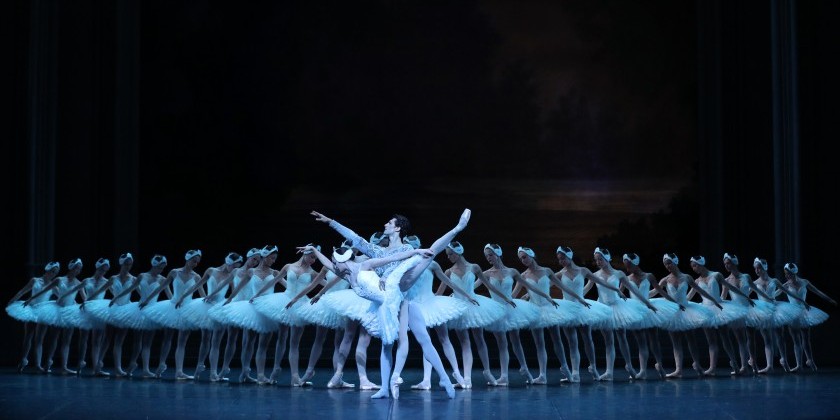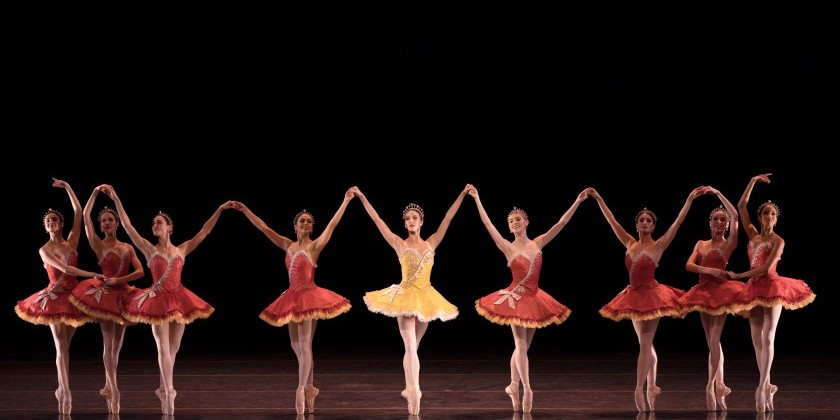Impressions of New York City Ballet : "A Midsummer Night’s Dream"
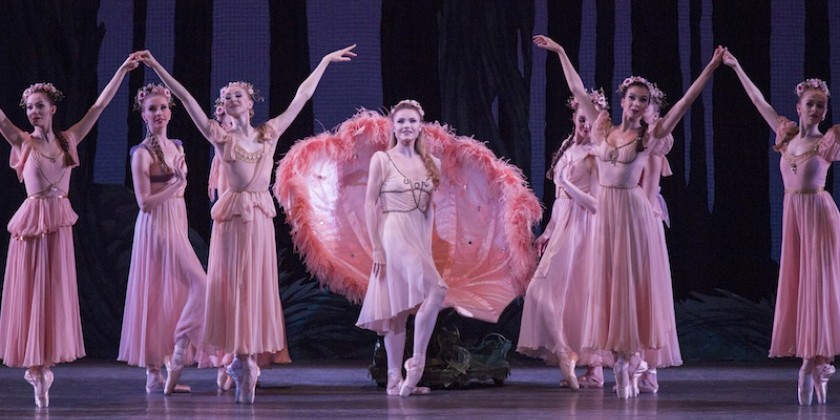
Balanchine's Enchanted World
Impressions of New York City Ballet, A Midsummer Night’s Dream
David H. Koch Theater, New York June 2–7, 2015
Choreography: George Balanchine Music: Felix Mendelssohn Scenery: David Hays Costumes: Karinska
Based on the play by William Shakespeare
Balanchine’s A Midsummer Night’s Dream (1962) skillfully interweaves a story of marital discord in a woodland fairy kingdom with the stories of four star-crossed mortals who enter the forest on Midsummer’s Eve. In the first act, the course of true love that “never did run smooth” finds its eventual happy ending, as it does in Shakespeare’s play. In the second act, a divertissement forms a pure-dance interlude within the drama as three couples celebrate their nuptials in an Athenian palace.
The New York City Ballet presented four casts of Midsummer in the last week of its spring season. I saw two of them. One performance featured marvelous acting, which gave the work a suspenseful dramatic momentum. The other, though less gripping as drama, included some particularly glorious dancing.
Daniel Ulbricht made his debut as the fairy king Oberon with Teresa Reichlen opposite him as the fairy queen Titania. Ulbricht, who is usually cast as Oberon’s servant Puck, seemed to relish playing the leading man. The role brought out a refreshingly grown-up demeanor from this superlative technician, who in some roles panders too much to the audience. He particularly excelled in the fast turns and rapid-fire jumps of the fiendishly difficult Scherzo solo—his leaps were high, and he gave full, clear shapes to the rapid crisscrossing of his feet in beaten jumps.
Reichlen portrays Titania with striking graciousness and dances beautifully throughout. She shines most, however, in her pas de deux with the weaver Bottom (danced by the corps dancer Harrison Coll), who is encumbered with a donkey’s head thanks to the mischief-making of Puck. Titania, under the spell of a love potion, becomes besotted with the clumsy creature.

In her autobiography, Suzanne Farrell, who danced Titania in the 1967 film of the ballet, calls this duet “one of Balanchine’s most charming, most humorous, and ultimately most touching dances.” And so it is. But it is rarely performed that way. Too often, the scene is played merely for laughs. The interaction between Reichlen and Coll, by contrast, is as moving as it is funny. She is tender, open-hearted, and artlessly graceful, while he moves awkwardly and hesitantly, as if in bashful amazement. She lovingly places a flower wreath around one of his long ears; she takes his long muzzle and pulls it gently to her face; she teaches him to partner her. Coll expresses Bottom’s sense of unworthiness to these attentions by lowering his head, turning in his bent knees, and generally making himself small. I am convinced that Balanchine meant for Bottom to express the universal fear of being undeserving of love; Coll’s characterization does this with adorable conviction.
The cast of four star-crossed mortal lovers who appear with Reichlen, Ulbricht, and Coll likewise make the drama and comedy of Balanchine’s Midsummer vivid. The humor of this ballet requires musicality and subtlety, which are amply displayed by Ashley Laracey (Hermia), Brittany Pollack (Helena), Zachary Catazaro (Demetrius), and Russell Janzen (Lysander). In a more-serious solo, Laracey impressively utilizes the entire stage space to express her distress at Demetrius’s changed affections, orbiting the stage in hurtling turns and rising into arabesques that seem to reach for his absent figure, only to fall into deep swoons. As Puck, Troy Schumacher, too, puts himself in the service of the drama rather than calling attention to himself in the role’s virtuosic moments.
In the Saturday matinee cast, Sara Mearns portrayed Titania as a vain and headstrong monarch. The intense musicality and risk-taking of her performance were at times breathtaking. This was especially true in one of Titania’s signature steps: a plunging partnered arabesque in which the ballerina swivels her body around while her leg remains up and her torso down. The roles of Titania and her attendants, dressed in long, pale-pink chitons, are always danced by tall women, and a sense of Amazonian strength pervades their choreography. Interestingly (a coincidence?), they frequently perform a step that is also a motif of the vengeful, man-hating Wilis in Giselle: a jump that whips into an arabesque with the arms held wide, the torso very erect.

Besides Mearns’s Titania, the other great dance pleasure in this performance came in the second-act divertissement pas de deux, danced by Tiler Peck and Tyler Angle. The music for the slow movement has very little dance impulse. Instead, Mendelssohn’s melody washes gently along, delicate and introspective. Balanchine responded with a dance in which the ballerina seems to float even when she is on the ground, lightly supported by her partner. The dance is extremely difficult, but Peck sails through it with a hushed fluidity. She must repeatedly balance on pointe on one leg for long stretches as Angle turns her in an ingenious series of arabesque promenades; indeed, balance—signifying the equilibrium of true love—is the dance’s predominant theme. Peck maintains a silky ease throughout. The strong rapport between Peck and Angle culminates in the adagio’s tender close, when, at last, balance cedes to off-balance, as she falls out of an arabesque into his waiting arms.
Nothing could provide more of a contrast to this quietly romantic pas de deux than the return of the tiny, wing-whirring insects of the fairy world—danced by students at the School of American Ballet—who catapult onstage as the palace dissolves and the forest’s vines overtake the space. The colorful creatures’ flitting presence throughout the forest scenes adds to the sense of strangeness and wonder that Balanchine took pains to evoke. In the final tableau, unseen dancers swing lanterns behind the branches of silhouetted trees, creating a flickering effect like fireflies on a summer night, so that we leave the theatre with a vision of an enchanted world that seems tantalizingly real, though just beyond the reach of our senses.








